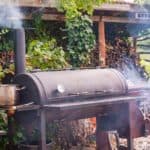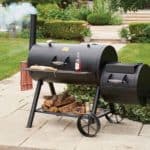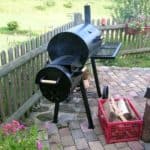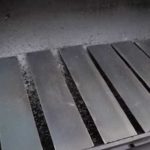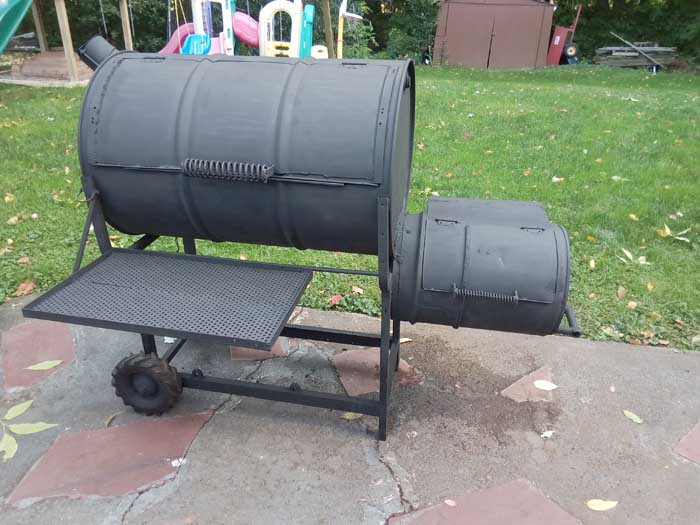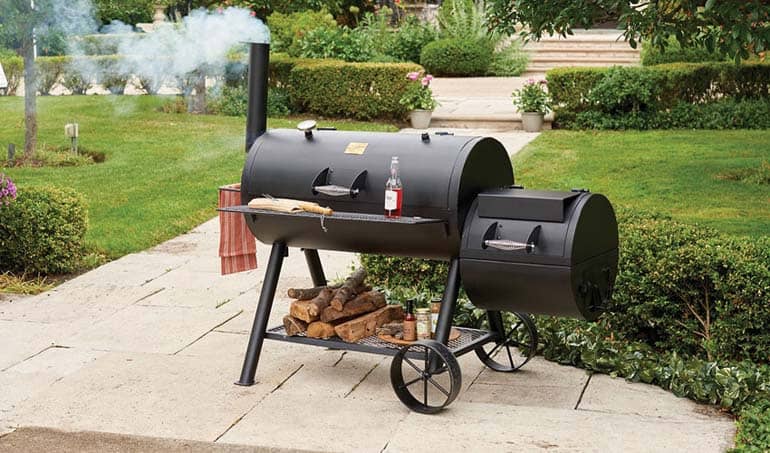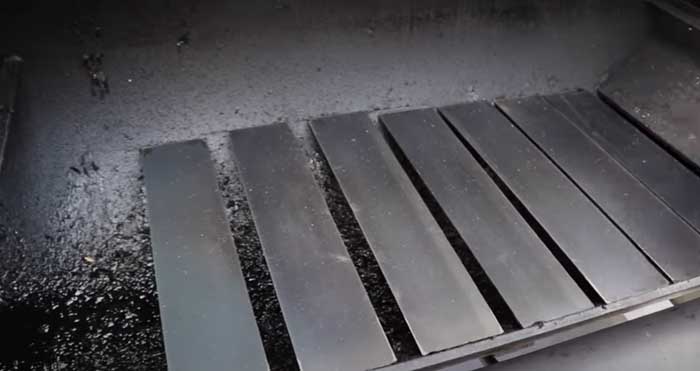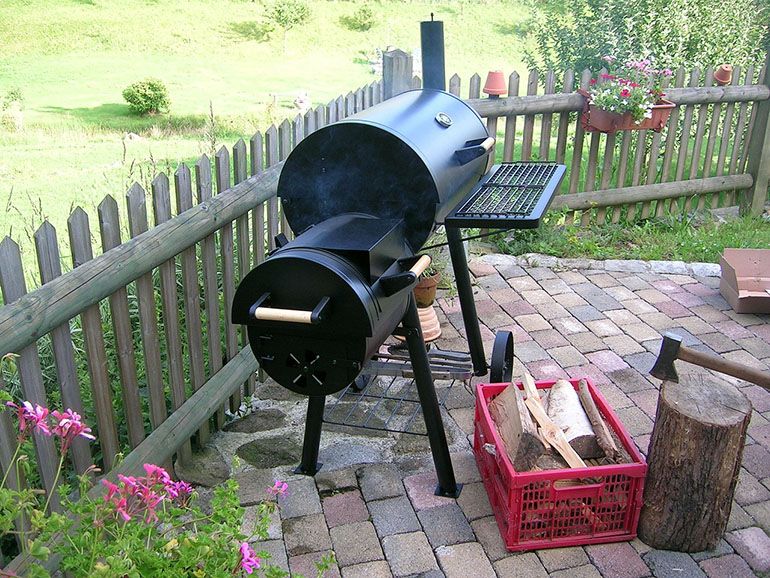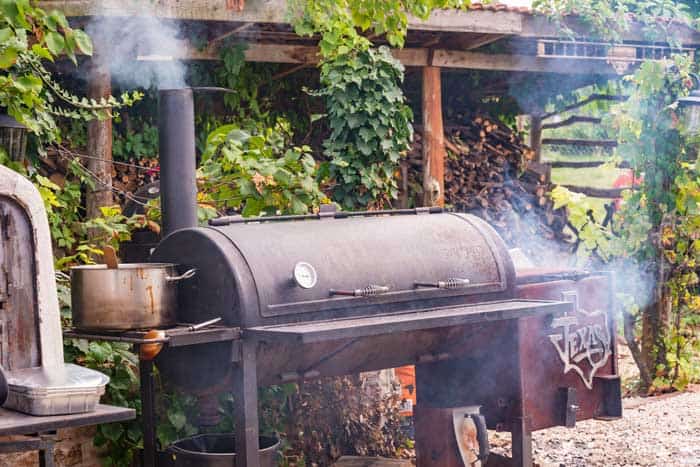Offset smokers offer perfectly barbecue smoked food thanks to their unique firebox setup and airflow system. Discover how backyard cookers work and how to set yours up with our easy offset smoker grill guide.
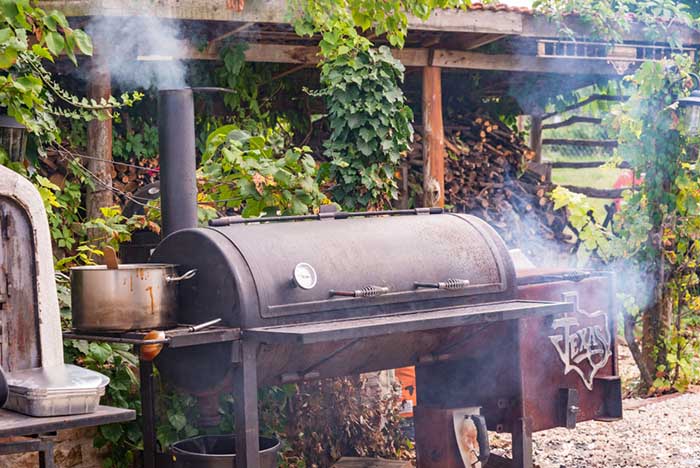
Very few bits of cooking equipment will enhance your reputation as a budding pit master as much as a good BBQ offset smoker. Grills might be a lot of people’s go-to for barbecue equipment, but the popularity of smokers is certainly on the rise and can be found in backyards across North America and Europe.
Offset smokers were originally developed in Texas and Oklahoma, by oilfield workers. Stationed in remote areas, and with massive steel drums at their disposal, they started to produce their own DIY offset smokers,
The offset smoker design was based on traditional brick BBQ pits, whereby the fire is stationed in one room and the resulting smoke is then drawn into the next room and passed through the meat.
This approach can be seen in modern designs, whereby the main chamber sits at the center of the smoker, and then has an attached firebox where the heat source is located. This attachment is where the term ‘offset’ comes into play.
Having the fire set to one side instead of being directly underneath the meat has a couple of advantages. One is that the heat source being placed further away means that the meat can cook slowly.
The other advantage is that the smoke is effectively drawn through the mean towards the exhaust chimney, allowing it to swirl around the meat and infuse it with flavor.
How to Cook With an Offset Smoker
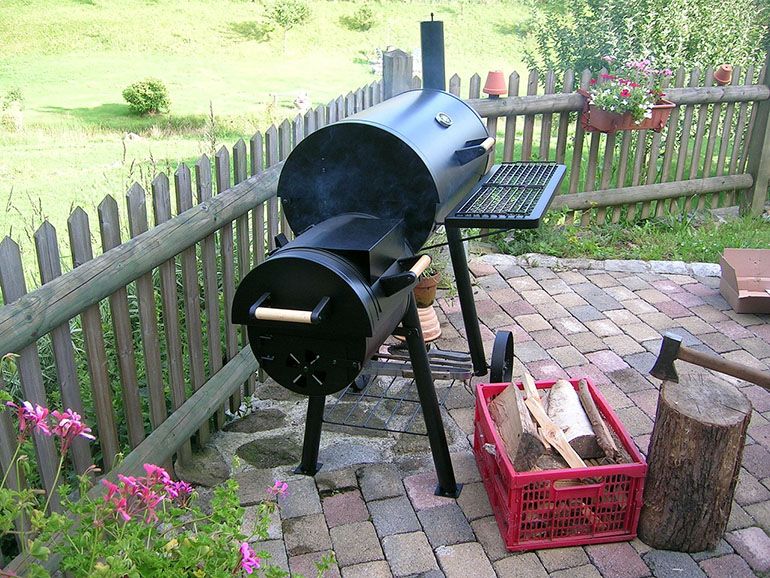
One of the barbecue smoking world’s most iconic cuts of meat is brisket, so where better to start illustrating the power of offsets than here?
Before you get started, you will need to season your smoker. For the unfamiliar, this isn’t a process of ‘seasoning’ with salt, but rather a means of creating a thin layer of protection over the smoker to help prevent rust or general wear.
I’ve written an entire guide on this, so be sure to check out my guide on how to season an offset smoker.
You start by lighting your coals and wood in the firebox so that the heat is set offset from the main chamber. This means that the smoke and heat will slowly cook the meat, and then exit the chamber through the chimney or vent at the top.
This is where offset smoking really comes into its own. This stream of heat and smoke is what gives a lot of smoked food its iconic bark and smoke rings.
Temperature levels are done by controlling the airflow through the smoker, which is done by adjusting the vents on the smoker. These are more commonly referred to as the dampers and are comprised of an intake damper placed near the bottom of the smoker, and an exhaust damper placed at the top.
Opening these dampers will allow more oxygen to flow in and out of the smoker, which will fire up the flames and raise the temperature in the chamber.
It’s important when you light your smoker to start with your dampers set to wide, and then as the fire starts to burn you can adjust from there. I recommend getting a good grill thermometer to help monitor temperatures and help you get towards the hallowed ground of 225°F for good BBQ smoking.
Light your smoker with good lump charcoal and a chimney starter, much like you would when lighting a charcoal grill, and make sure to spread the embers out evenly within the firebox. Close the lid and allow the smoker to heat up before placing your meat in the smoker. Make sure to have the lid closed.
If you overshoot the temperature, simply adjust the dampers by closing them slightly. If this is your first time using vents then it will take a bit of practice as you learn how your smoker reacts to these tweaks.
Similarly, if your temperature remains too low despite having the vents wide open, consider adding more charcoal.
Once you have ensured that the smoker’s temperature is at 225°F, I recommend adding wood chips to the coals. Flavored wood chips are a great way to enhance the flavor of your meat.
What to Look for in an Offset Smoker
As with any type of product that has experienced a surge in popularity, a lot of cheaper versions are available and if you don’t know what to look for then you can be caught out. Here’s what to keep an eye out for when buying an offset smoker.
The Build
Good BBQ smoking is all about maintaining consistent temperatures for a long period of time. Any fluctuations in airflow or heat loss can interfere with this significantly. As a result, it’s absolutely imperative that the smoker is made with the highest quality build, with no air leaks.
Make sure you get something that guarantees good insulation. Pay special attention to how efficiently the lid closes, and how well the firebox seals shut. Also, note the seal between the firebox and the main chamber.
The Size
Some of the best BBQ meat is also the largest. Whether it be brisket, a rack of ribs, or even a whole chicken. If you want to replicate this kind of cooking then you’ll need something big enough to accommodate this, as well as room to allow good airflow around the meat.
Benefits of an Offset Smoker
Offset smokers are by far my favorite type of smoker. Here’s why…
- The positioning of the firebox ensures excellent air and smoke flow through the chamber.
- The positioning of the firebox also means that you can stoke the coals or add more wood chips or charcoal without disrupting the temperatures in the main chamber.
- The vast majority of offset smokers offer large cooking space, allowing you to cook a lot of food in one batch.
- Being charcoal-fuelled, there’s nowhere near as much upkeep required as there is for gas or electric-powered units. While gas grills or smokers need regular tune-ups, offset smokers only need seasoning prior to use and then every year thereafter. Furthermore, their analog composition means that there are fewer components that are vulnerable to failure or breaking.
- They also just look… cool, right?
Disadvantages of Offset Smokers
- Temperatures are so dependent on good heat insulation that any cheap or poor-quality builds are guaranteed to be almost useless.
- They can take a long time to heat up, sometimes taking up to an hour to reach ideal cooking temperatures.
- You’ll need to check on temperatures consistently. However, a lot of modern temperature probes can be used remotely, which means you don’t need to always be at the smoker’s side.
- There’s a lot of skill and patience involved. While this is what barbecue is all about, it can be daunting to a lot of newcomers.

